In today’s fast-paced manufacturing world, the quest for lightweight, strong, and versatile materials has led to the rise of sandwich plates. These innovative structures, which combine two outer layers of material with a core, offer a unique blend of properties that make them ideal for a wide range of applications. At the heart of their creation lies an essential process: integrated metal stamping. This article delves into the intricacies of sandwich plate construction and the pivotal role that integrated metal stamping plays in producing high-quality sandwich plates, while also looking ahead to the future of this technology.
Introduction to Sandwich Plates
Sandwich plates, a marvel of modern engineering, are a testament to the ingenuity of combining two or more materials to create a composite that offers unparalleled strength and versatility. These innovative structures are found in a wide array of industries, from automotive to aerospace, and even in the construction of skyscrapers. At their core, sandwich plates are essentially three-layer composites where an inner core material is sandwiched between two thin face sheets. This unique construction allows for a lightweight design that doesn’t compromise on durability.
The top layer, or face sheet, is often made from materials like aluminum or steel, chosen for their high strength and resistance to corrosion. Below the core, the second face sheet serves as the bottom layer, providing additional support and rigidity. The core itself can vary greatly, with common materials including foam, balsa wood, honeycomb structures, or even lightweight metals like aluminum. This core not only adds structural integrity but also contributes significantly to the overall weight reduction of the sandwich plate.
In the automotive sector, sandwich plates are a game-changer. They are used in the construction of vehicles to enhance fuel efficiency without sacrificing passenger safety. The lightweight nature of these plates helps to reduce the overall weight of the car, which in turn decreases the energy required to move it, resulting in better fuel economy. The same principle applies to the aerospace industry, where sandwich plates are used in aircraft fuselages and wings to achieve greater fuel efficiency and higher payload capacities.
In the construction industry, sandwich plates have become a popular choice for building facades and roofs. Their insulating properties make them an excellent choice for energy-efficient buildings, as they can significantly reduce heat transfer between the interior and exterior environments. This not only improves comfort but also lowers energy consumption, making sandwich plates an environmentally friendly option.
The versatility of sandwich plates is further enhanced by the variety of materials and manufacturing techniques available. For instance, the use of composite materials like carbon fiber can result in sandwich plates that are exceptionally strong and lightweight, making them ideal for high-performance applications. The design flexibility allows engineers to tailor the sandwich plate’s characteristics to meet specific requirements, whether it’s for structural support, thermal insulation, or acoustical properties.
The history of sandwich plates dates back to the early 20th century, with early applications including the construction of marine and aviation structures. Over the years, advancements in materials science and manufacturing processes have expanded the range of possible applications. Today, sandwich plates are a staple in many industries, thanks to their combination of properties that no single material can match.
One of the key advantages of sandwich plates is their ability to distribute stress more evenly throughout the structure. This is due to the layered construction, which helps to dissipate forces more effectively. As a result, sandwich plates can withstand high loads without deforming, which is critical in environments where structural integrity is paramount.
Another significant benefit is the thermal insulation that sandwich plates offer. The core material acts as a barrier, reducing the transfer of heat through the plates. This property is particularly valuable in climates where temperature control is essential, as it can minimize the need for excessive heating or cooling.
The manufacturing process of sandwich plates is also a subject of great interest. Integrated metal stamping plays a crucial role in this process, as it allows for the precise and efficient production of these complex structures. The stamping process involves the use of dies to form the metal sheets into the desired shapes, which are then assembled with the core material to create the final sandwich plate.
In conclusion, sandwich plates are a sophisticated engineering solution that has found its way into numerous industries. Their ability to combine the benefits of multiple materials into a single structure makes them a compelling choice for applications that demand both strength and lightweight design. As technology continues to evolve, the future of sandwich plates looks bright, with even more innovative applications and improvements on the horizon.
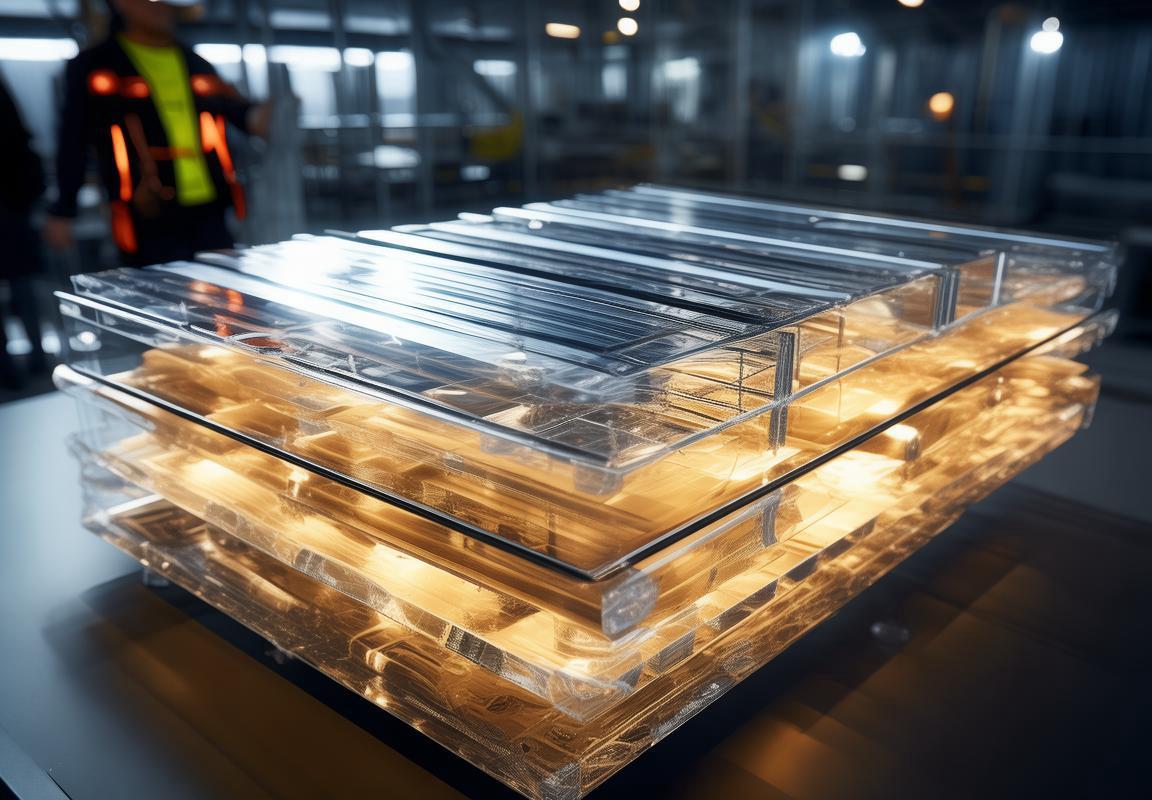
The Role of Integrated Metal Stamping
Integrated metal stamping plays a pivotal role in the manufacturing process of sandwich plates, offering a blend of precision, efficiency, and versatility that is hard to match. This technique allows for the creation of complex shapes and structures, which are essential for the performance and durability of sandwich plates.
The core of integrated metal stamping lies in its ability to form metal sheets into intricate shapes with high accuracy. This is particularly crucial for sandwich plates, which are designed to provide structural integrity while also allowing for lightweight designs. The process involves the use of stamping presses, which exert immense pressure on the metal sheets, shaping them into the desired form.
One of the key benefits of integrated metal stamping is its efficiency in mass production. By creating molds that can be used repeatedly, manufacturers can produce a large number of sandwich plates in a short amount of time. This not only reduces production costs but also ensures consistency in the quality of the final product.
The precision achieved through integrated metal stamping is another significant advantage. Sandwich plates often require tight tolerances to perform their intended functions, such as in aerospace or automotive applications. The stamping process allows for the creation of parts that meet these exacting standards, ensuring that the sandwich plates are reliable and can withstand the demands of their environment.
In the construction of sandwich plates, the ability to integrate different materials is a game-changer. Integrated metal stamping enables the creation of cores and facings from various metals, which can be bonded together to form the composite structure. This method allows for the customization of sandwich plates to suit specific mechanical, thermal, and acoustic requirements.
The versatility of integrated metal stamping is evident in the wide range of materials that can be used. From traditional metals like aluminum and steel to advanced materials like titanium and composite alloys, the process can accommodate a diverse array of materials. This flexibility is essential for industries that require sandwich plates with unique properties, such as high strength-to-weight ratios or resistance to corrosion.
Another important aspect of integrated metal stamping is its environmental impact. The process is known for its energy efficiency and reduced waste, as it minimizes the amount of material that needs to be discarded. This not only helps in cost savings but also contributes to a more sustainable manufacturing approach.
The complexity of sandwich plates often requires the integration of multiple components within a single part. Integrated metal stamping makes this possible by allowing for the formation of intricate features and features within the same stamping operation. This reduces the need for additional assembly steps, streamlining the production process and further enhancing efficiency.
Moreover, the durability of sandwich plates is greatly influenced by the quality of the joints between the core and the facings. Integrated metal stamping ensures that these joints are strong and consistent, as the process can create precise contours that facilitate a reliable bond. This is particularly important for sandwich plates used in high-stress environments, where failure can have serious consequences.
The scalability of integrated metal stamping is also a notable advantage. Whether manufacturing a few units or thousands, the process can be adjusted to meet varying production volumes without compromising on quality. This makes it an ideal choice for both small-scale prototyping and large-scale production runs.
In summary, integrated metal stamping is indispensable in the production of sandwich plates due to its precision, efficiency, versatility, and ability to integrate multiple materials. It not only meets the stringent requirements of various industries but also contributes to sustainable manufacturing practices, making it a cornerstone of modern sandwich plate manufacturing.
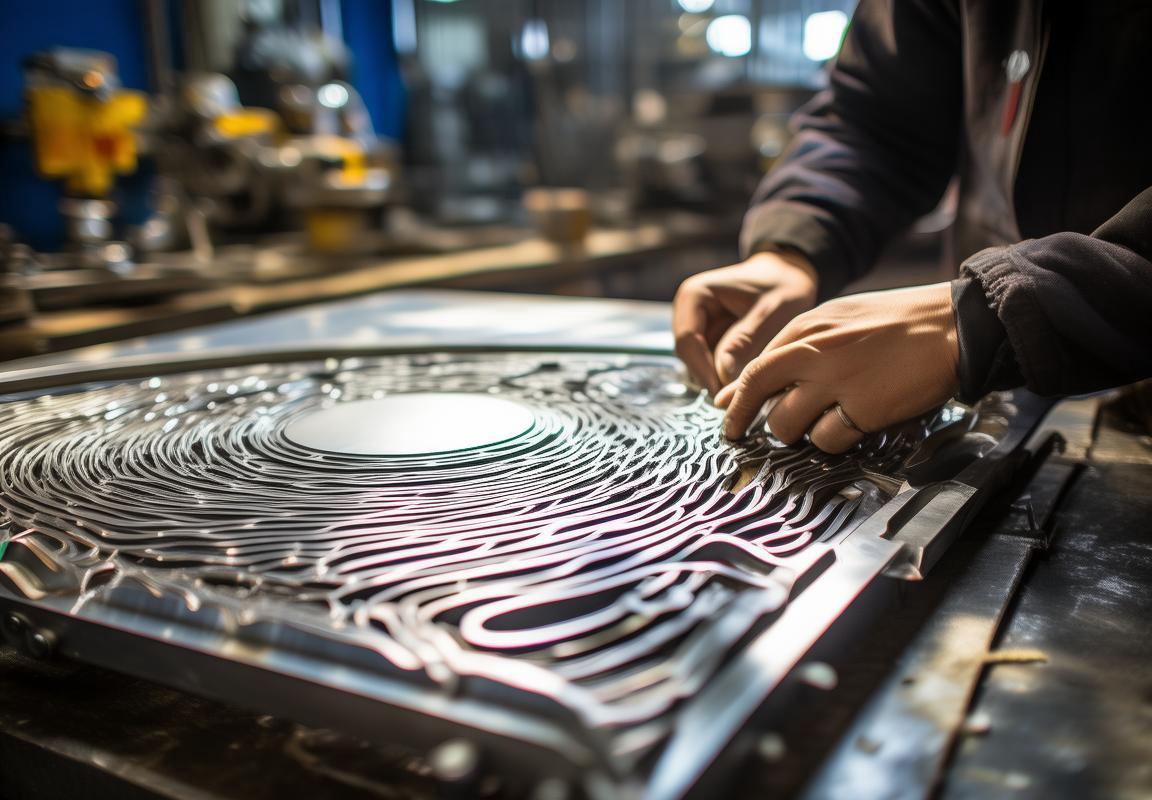
Understanding Sandwich Plate Construction
Sandwich plates, often referred to as composite panels, are a marvel of modern engineering, combining the strengths of different materials to create a lightweight yet robust structure. The construction of these plates is a blend of precision and innovation, allowing for a wide range of applications in aerospace, automotive, construction, and many other industries.
The core of a sandwich plate is its unique layered design. It consists of two outer skin layers, typically made of metal, plastic, or composite materials, sandwiched around a central core. This core material is often a foam, honeycomb, or paper-based material, chosen for its ability to provide structural support and enhance the overall strength-to-weight ratio of the plate.
Outer Skin LayersThe outer skins are the visible faces of the sandwich plate and are designed to protect the core from environmental factors and to distribute loads evenly across the panel. Metal skins, such as aluminum or steel, are commonly used due to their durability and resistance to corrosion. These skins are typically stamped from flat sheets into the desired shape, which is a critical step in the manufacturing process known as integrated metal stamping.
Core MaterialThe choice of core material is pivotal in determining the performance of the sandwich plate. Foam cores are favored for their high strength-to-weight ratio and are often used in applications where weight reduction is crucial. Honeycomb cores, with their hexagonal cell structure, offer excellent rigidity and are widely used in aerospace applications. Paper-based cores, although less common, can be environmentally friendly and suitable for certain lightweight applications.
Adhesives and BondingThe outer skins and the core material are bonded together using adhesives. This bonding process is essential for the structural integrity of the sandwich plate. The adhesive must be chosen carefully to ensure that it can withstand the stresses and environmental conditions to which the plate will be exposed. The bonding process is often a critical step that requires precision and control.
Manufacturing TechniquesThe construction of sandwich plates involves several manufacturing techniques. One of the most important is integrated metal stamping, which allows for the creation of complex shapes and ensures the uniformity and precision of the metal skins. This process begins with the design of the stamping dies, which are precision-machined tools that will form the metal sheets into the desired shape.
Forming and ShapingOnce the metal sheets are stamped, they are then formed into the correct shape. This may involve bending, rolling, or other forming techniques. The core material is also cut to size and shape to fit within the formed metal skins. The precision of these processes is crucial, as any deviation can affect the performance and aesthetics of the final product.
Quality ControlThroughout the construction process, quality control is paramount. Inspections are conducted at various stages to ensure that the dimensions, material properties, and bonding are up to the required standards. Non-destructive testing methods, such as ultrasonic testing or X-ray inspection, may be used to detect any internal defects in the sandwich plate.
ApplicationsThe versatility of sandwich plate construction is what makes it so valuable. It allows for the creation of lightweight structures that can withstand high loads, making it ideal for use in aircraft, racing cars, and high-rise buildings. The ability to customize the thickness and composition of the layers also means that sandwich plates can be tailored to meet specific engineering requirements.
Environmental ConsiderationsAs the world becomes more environmentally conscious, the construction of sandwich plates is also evolving to be more sustainable. Recycled materials and eco-friendly adhesives are increasingly being used in the manufacturing process. This not only reduces the environmental impact but also opens up new possibilities for the application of sandwich plates in eco-friendly projects.
In conclusion, the construction of sandwich plates is a complex and intricate process that requires a careful balance of materials, manufacturing techniques, and quality control. The result is a product that is lightweight, strong, and versatile, capable of meeting the demands of a wide range of industries and applications.
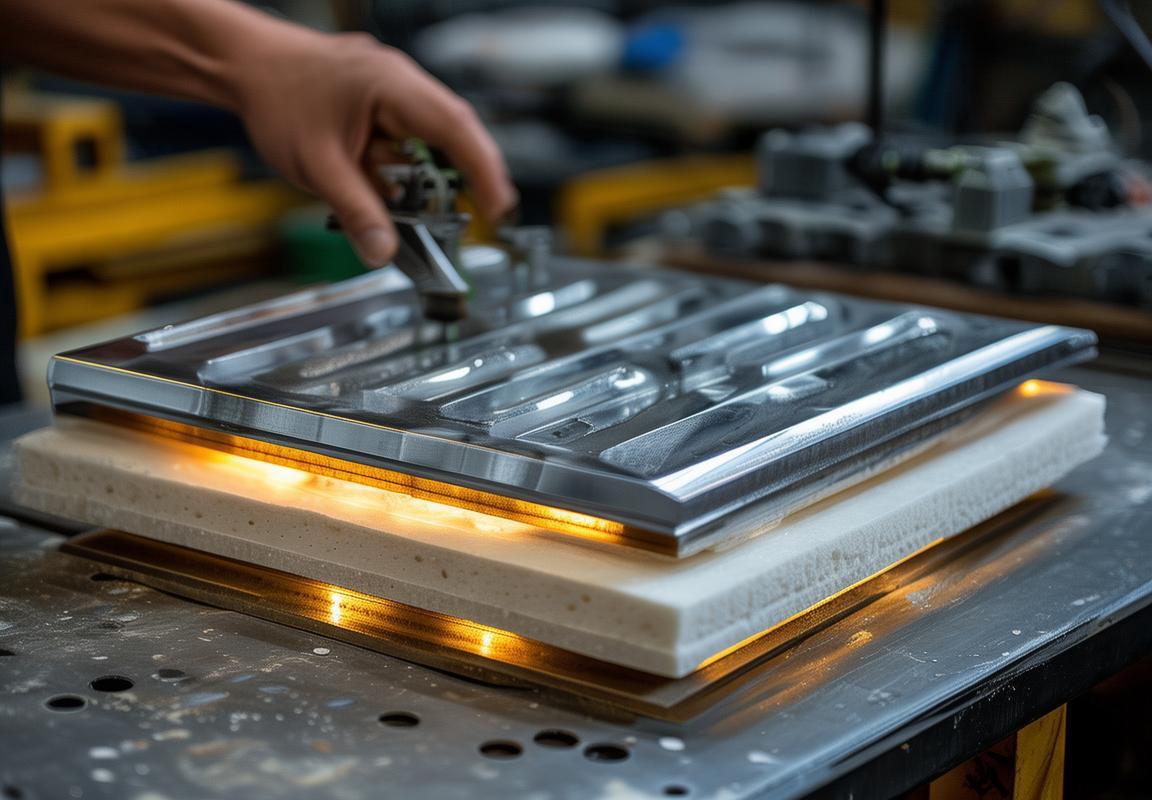
Advantages of Integrated Metal Stamping for Sandwich Plates
Integrated metal stamping offers a range of benefits that make it an ideal choice for constructing sandwich plates. These advantages stem from the precision, efficiency, and versatility of the stamping process, which is particularly well-suited for the layered design of sandwich plates. Here’s a closer look at some of the key advantages:
The precision and consistency of metal stamping ensure that each layer of a sandwich plate is perfectly formed, which is crucial for maintaining the structural integrity and performance of the final product. The high-speed, automated nature of the stamping process minimizes human error and guarantees that every plate is uniform in thickness and shape.
One of the most significant advantages of using integrated metal stamping for sandwich plates is the ability to create complex geometries with ease. The stamping process can handle intricate patterns and shapes, allowing designers to incorporate features that enhance the functionality and aesthetics of the sandwich plates. This level of detail is often unattainable with traditional manufacturing methods.
The efficiency of metal stamping is another major benefit. By stamping multiple parts simultaneously, manufacturers can produce a large number of sandwich plates in a short amount of time. This not only reduces production time but also cuts down on labor costs, making the process cost-effective on a large scale.
The process of metal stamping is highly adaptable, which means it can be easily modified to accommodate changes in design or material specifications. This flexibility is particularly valuable for sandwich plates, as they can vary widely in terms of the materials used for the core, skin, and insulation layers. Whether it’s switching to a different type of metal or altering the thickness of the layers, the stamping process can be adjusted without significant downtime.
The consistency in material properties is a hallmark of metal stamping. Since the process involves applying pressure to metal sheets to form the desired shape, the material is deformed uniformly, resulting in a consistent thickness across the entire plate. This uniformity is essential for sandwich plates, where the core’s ability to distribute stress evenly is critical for structural integrity.
The environmental impact of manufacturing processes is a growing concern, and integrated metal stamping offers a greener alternative. Stamping is a highly efficient process that minimizes waste, as it uses flat sheets of metal that are precisely cut to shape. This reduces the amount of material that ends up in landfills and slashes energy consumption compared to other manufacturing methods.
The durability of sandwich plates made through integrated metal stamping is exceptional. The strength of the metal, combined with the precision of the stamping process, ensures that the plates can withstand harsh conditions and heavy loads. This durability is especially important for applications in the aerospace, automotive, and construction industries, where sandwich plates are often used.
The cost-effectiveness of metal stamping for sandwich plates cannot be overstated. The high-speed production and the ability to create complex shapes without the need for additional assembly steps contribute to a lower overall cost. This affordability makes metal stamping an attractive option for both small-scale and large-scale production runs.
The quality control in metal stamping is stringent. Each step of the process is monitored to ensure that the final product meets the required specifications. This level of oversight is particularly important for sandwich plates, where even a small defect can compromise the plate’s performance. The consistency and reliability of the stamping process help maintain high-quality standards throughout the production cycle.
In summary, the advantages of integrated metal stamping for sandwich plates are numerous. From precision and efficiency to adaptability and environmental benefits, the stamping process offers a robust solution for creating high-quality, durable, and cost-effective sandwich plates.
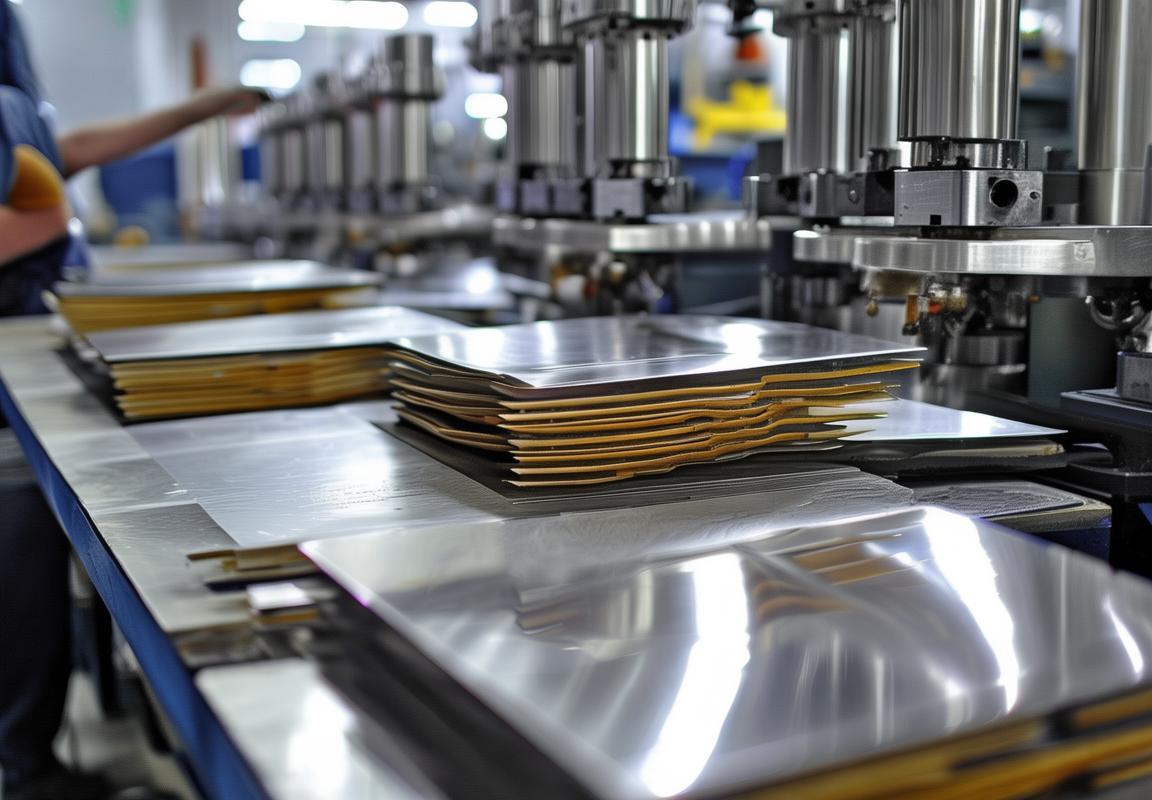
The Stamping Process: How It Works
The metal stamping process is a fascinating journey from raw material to a precisely formed part, and it’s the backbone of producing sandwich plates. Here’s a detailed look into how this process unfolds:
Precision Dies: The process begins with the creation of precision dies, which are the molds that shape the metal. These dies are crafted with extreme accuracy to match the specifications of the final sandwich plate design. They are often made from high-speed steel or tool steel, known for their durability and ability to withstand the high pressures of the stamping process.
Blanks: The initial step involves cutting or shearing sheets of metal into the shape of blanks. These blanks are the starting point for the stamping process. The thickness of the metal and the desired shape of the sandwich plate dictate the type of blanking process used, whether it’s blanking, piercing, or blanking and piercing combined.
Punching: The blank is then placed into the die, and a punch pushes against it. The punch is a tool with a sharp, pointed end that deforms the metal to create the first feature of the sandwich plate. This could be a hole, a bend, or the start of a raised lip.
Forming: After the initial punch, the blank is now ready for forming. The metal is stretched, bent, or otherwise shaped into the desired configuration. This is achieved by manipulating the blank within the die, which may involve additional punches or die inserts to achieve complex shapes.
Drawing: Drawing is a specific type of forming that involves creating deep, conical holes in the metal. This is done by pulling the metal into the die with a punch, creating a draw bead. The process can be repeated to increase the depth of the hole, which is a crucial step in sandwich plate construction.
Finishing: Once the basic shape of the sandwich plate is achieved, it often requires finishing touches. This could include deburring, which removes sharp edges, or trimming, which cuts the excess material from around the edges of the plate. Finishing operations ensure that the sandwich plate is ready for its intended application.
Edge Forming: In many cases, sandwich plates require specific edge formations. This might involve beading, which creates a rounded or contoured edge, or flanging, which adds a flat or curved lip to the edge. These operations are carefully controlled to maintain the structural integrity of the plate.
Quality Control: Throughout the stamping process, quality control checks are performed to ensure that each sandwich plate meets the required specifications. This can include visual inspections, measurements, and even destructive testing to verify the strength and durability of the metal.
Final Assembly: Once the individual sandwich plates are stamped and finished, they are assembled into the final product. This may involve attaching other components, such as stiffeners or insulation materials, to create the complete sandwich structure.
Environmental Considerations: Modern stamping processes are increasingly environmentally conscious. This means that the energy used to power the machinery is sourced from renewable resources, and the scrap metal generated during the process is recycled to reduce waste.
Innovation: The stamping process for sandwich plates is not static; it is constantly evolving. Innovations in die design, material science, and automation are making the process more efficient, cost-effective, and capable of producing more complex shapes.
In conclusion, the stamping process for sandwich plates is a blend of art and science, requiring precise engineering and meticulous attention to detail. From the creation of the die to the final assembly, each step is crucial in producing a high-quality, reliable sandwich plate that meets the demands of a wide range of applications.
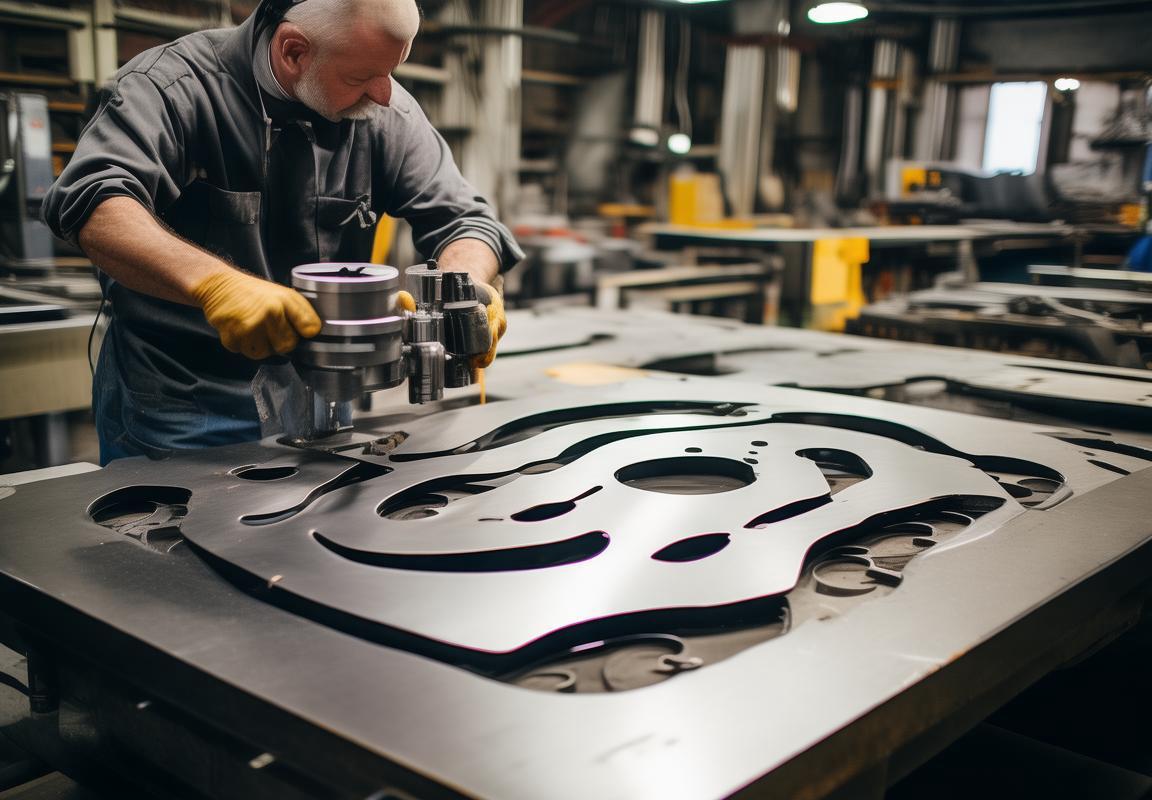
Customization and Efficiency in Metal Stamping
In the realm of metal stamping, customization and efficiency go hand in hand, creating a dynamic synergy that shapes the industry’s landscape. Let’s delve into how these two aspects intertwine and drive success in metal stamping processes for various applications, including sandwich plates.
Precision Meets DesignThe beauty of metal stamping lies in its ability to produce intricate shapes with high precision. This precision is crucial for creating sandwich plates, which often require complex geometries to house insulation materials and achieve their structural integrity. Stamping allows for the creation of these intricate designs with ease, ensuring that the final product meets the exact specifications of the design.
Quick Prototyping and IterationCustomization is not just about creating unique shapes; it’s also about the ability to iterate quickly. In the metal stamping process, changes to the design can be made relatively swiftly, allowing engineers and designers to prototype and test new ideas rapidly. This agility is invaluable for developing sandwich plates that might have specific performance requirements or unique structural features.
Reduced Material WasteEfficiency in metal stamping is often measured by the reduction of material waste. By using precise stamping techniques, manufacturers can minimize scrap, as the process is designed to shape the metal to the desired form with minimal excess material. This not only saves costs but also reduces the environmental impact of metal production.
Streamlined Production LinesThe integration of automation and advanced machinery in metal stamping has revolutionized production lines. These systems can be tailored to specific product requirements, including those for sandwich plates. The result is a streamlined process that can handle high volumes with consistent quality, reducing the need for manual labor and increasing throughput.
Versatility in Material SelectionMetal stamping offers a wide range of materials to choose from, each with its own set of properties that can be leveraged for sandwich plate construction. From lightweight aluminum to sturdy steel, the ability to select the right material for the job ensures that the sandwich plates are not only durable but also optimized for their intended use.
Cost-Effective ProductionEfficiency in metal stamping can lead to significant cost savings. By optimizing the design for stamping, manufacturers can reduce the number of parts required, thereby simplifying assembly and reducing the overall cost of production. This cost-effectiveness is a key factor in the competitiveness of products like sandwich plates in the market.
Quality Control IntegrationCustomization and efficiency in metal stamping are closely linked to the integration of quality control measures. Advanced inspection technologies, such as automated optical inspection (AOI) and X-ray systems, can be incorporated into the stamping process to ensure that every component meets the stringent quality standards. This integration guarantees that the sandwich plates are reliable and free from defects.
Adaptability to Complex ShapesSandwich plates often require complex shapes to achieve their desired performance. The metal stamping process excels in creating these shapes, whether it’s a unique profile for structural reinforcement or a tailored design for aesthetic purposes. The adaptability of the process means that even the most complex requirements can be met efficiently.
Innovation in Tooling and DiesThe tools and dies used in metal stamping play a critical role in both customization and efficiency. Advances in tooling technology allow for the creation of more durable and precise dies, which can be used to stamp a wide range of materials. This innovation means that manufacturers can produce sandwich plates with greater ease and at a higher speed.
Collaboration Between Design and ManufacturingTo truly harness the benefits of customization and efficiency in metal stamping, there must be a strong collaboration between design engineers and manufacturing teams. This partnership ensures that the design is not only feasible but also optimized for the stamping process, resulting in a product that is both innovative and cost-effective.
In conclusion, the marriage of customization and efficiency in metal stamping is a powerful combination that drives innovation and cost savings. For sandwich plates, this approach ensures that the final product is not only tailored to the highest standards but also produced in a manner that is both resourceful and sustainable.

Case Studies: Successful Applications of Integrated Metal Stamping for Sandwich Plates
In the realm of sandwich plate manufacturing, integrated metal stamping has proven to be a game-changer, offering numerous successful applications across various industries. Let’s delve into some case studies that showcase the triumphs of this innovative process.
Case Study 1: Automotive IndustryAutomakers have long relied on metal stamping to create lightweight, yet sturdy components for their vehicles. In one particular project, an automaker sought to enhance the structural integrity of their car’s roof panels. By utilizing integrated metal stamping for sandwich plates, they were able to design a panel that combined high strength with exceptional flexibility. This allowed the vehicles to withstand rigorous crash tests while also providing a smooth, seamless finish that was aesthetically pleasing to the eye.
Case Study 2: Aerospace SectorThe aerospace industry demands materials that can withstand extreme temperatures and harsh conditions. In a collaborative effort between an aerospace manufacturer and a metal stamping company, integrated metal stamping was employed to produce heat-resistant sandwich plates for aircraft components. The result was a lightweight, yet highly durable solution that contributed to the overall performance and efficiency of the aircraft. The process enabled the creation of intricate geometries and tight tolerances, crucial for the precise fit of these critical parts.
Case Study 3: Construction and Building MaterialsIn the construction sector, sandwich plates are used for roofing, walls, and floors, offering superior insulation and structural support. A construction company faced the challenge of creating sandwich panels that could withstand heavy loads and weathering without compromising on thermal efficiency. By opting for integrated metal stamping, they were able to design panels with a multi-layered structure, incorporating a high-performance core material. The stamped panels were not only lightweight but also easy to install, saving both time and resources on construction sites.
Case Study 4: Marine IndustryMarine vessels require materials that are resistant to corrosion and can withstand the rigors of sea travel. A marine manufacturer turned to integrated metal stamping for sandwich plates used in ship hulls and superstructures. The process allowed for the creation of custom-sized panels with complex geometries, which were then bonded together to form robust structures. The sandwich plates offered excellent strength-to-weight ratios, ensuring the safety and longevity of the marine vessels.
Case Study 5: Renewable EnergyIn the renewable energy sector, integrated metal stamping has been instrumental in the production of solar panel mounting systems. These systems need to be durable, weatherproof, and capable of supporting heavy solar arrays. By employing stamping techniques, manufacturers were able to create lightweight, yet highly robust panels that could be quickly assembled on-site. This streamlined the installation process, reducing costs and enhancing the efficiency of solar energy projects.
These case studies highlight the versatility and effectiveness of integrated metal stamping for sandwich plates. Whether in the automotive, aerospace, construction, marine, or renewable energy industries, the process has proven to be a reliable and innovative solution that addresses the unique challenges faced by manufacturers and end-users alike. From enhancing structural integrity to reducing weight and improving efficiency, integrated metal stamping for sandwich plates has become a cornerstone in the development of advanced materials and components.

The Future of Sandwich Plates in Metal Stamping Technology
In the ever-evolving landscape of metal stamping technology, sandwich plates have emerged as a versatile and innovative solution for a wide range of industries. As we delve into the future, it’s clear that the integration of advanced metal stamping techniques will play a pivotal role in shaping the next generation of sandwich plates. Here’s a glimpse into the potential future of this technology:
The integration of smart materials into sandwich plate construction is on the horizon. By incorporating sensors and smart materials, these plates could offer real-time data on their structural integrity and environmental conditions. This would be particularly beneficial in aerospace, automotive, and construction sectors, where the ability to monitor performance and respond to changes is crucial.
Advanced manufacturing processes are set to revolutionize the production of sandwich plates. Techniques like additive manufacturing (3D printing) are being explored to create complex geometries that were once impossible with traditional stamping methods. This opens up new possibilities for customization and design, allowing engineers to tailor sandwich plates to specific applications with greater precision.
The demand for lightweight, high-strength materials continues to grow, and metal stamping is perfectly positioned to meet this challenge. Aluminum, titanium, and advanced high-strength steel alloys are increasingly being used in sandwich plate construction due to their favorable strength-to-weight ratios. These materials not only contribute to the structural integrity of the plates but also reduce the overall weight, enhancing fuel efficiency and performance.
Energy efficiency is a key concern in many industries, and the future of sandwich plates in metal stamping technology promises to address this. By developing more efficient production methods and materials, the industry can reduce energy consumption and waste. This includes the use of energy-saving stamping presses and the optimization of material usage to minimize scrap.
The integration of sustainability practices into the metal stamping process is gaining traction. Recycled materials and environmentally friendly manufacturing processes are becoming more common, aligning with global efforts to combat climate change. As sandwich plates become more sustainable, their applications could expand into eco-conscious markets, such as renewable energy and green building.
Collaboration between metal stamping companies and research institutions is fostering innovation. Joint ventures are exploring new alloys, coatings, and surface treatments that can enhance the performance and longevity of sandwich plates. This interdisciplinary approach is likely to lead to breakthroughs that will redefine the capabilities of these plates.
The customization of sandwich plates is set to become even more sophisticated. With advancements in computational design and simulation, engineers can create highly optimized sandwich plates that are tailored to specific load conditions and environments. This level of customization ensures that the plates not only perform as required but also do so with minimal material usage.
The future of sandwich plates in metal stamping technology also involves addressing the challenges of aging infrastructure. As bridges, buildings, and other structures age, the need for repairs and upgrades increases. Integrated metal stamping offers a solution for creating lightweight, durable components that can be installed to reinforce or repair aging infrastructure, extending its lifespan and reducing maintenance costs.
In conclusion, the future of sandwich plates in metal stamping technology is bright. With a focus on innovation, sustainability, and customization, these plates are poised to become even more integral to a wide range of industries. As the technology continues to evolve, we can expect to see sandwich plates that are not only stronger and lighter but also smarter and more adaptable to the unique demands of their applications.
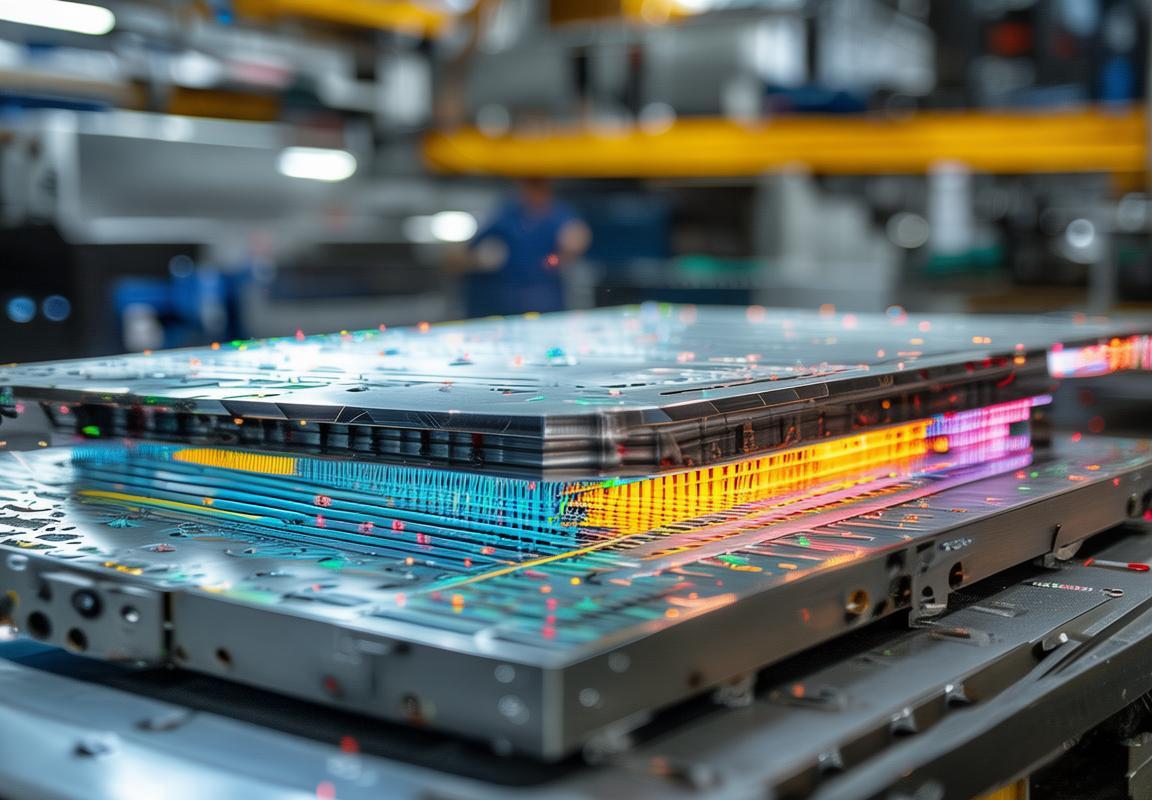
Conclusion: Why Integrated Metal Stamping is Key for High-Quality Sandwich Plates
The precision and consistency of integrated metal stamping have revolutionized the manufacturing of sandwich plates, ensuring not just structural integrity but also enhanced performance and durability. Here’s a look at why this process is pivotal for producing high-quality sandwich plates.
Precision Engineering in Sandwich Plate ProductionThe intricacies of sandwich plate design require a high degree of precision, which is exactly what integrated metal stamping delivers. By using advanced machinery and techniques, the process allows for the creation of complex shapes with tight tolerances, ensuring that each sandwich plate meets the exact specifications required for its intended application.
Efficient Use of MaterialsOne of the standout advantages of integrated metal stamping is its ability to optimize material usage. The process minimizes waste by precisely cutting sheets of metal into the required shapes and sizes. This not only reduces costs but also contributes to a more sustainable manufacturing practice, as less material is left unused after the stamping process.
Adaptability for Various Sandwich Plate TypesWhether it’s a composite material or a metal-to-metal sandwich plate, the stamping process can be adapted to suit different types of materials and designs. This versatility means that manufacturers can produce a wide range of sandwich plates, from lightweight panels for aerospace applications to heavy-duty structures for construction.
Streamlined Manufacturing ProcessThe stamping process streamlines the manufacturing of sandwich plates, reducing production times significantly. By automating many of the steps involved, such as blanking, forming, and trimming, manufacturers can achieve high production rates without compromising on quality.
Reduced Production CostsBy combining precision with efficiency, integrated metal stamping helps to lower production costs. The reduction in material waste, along with the ability to produce parts in large quantities, leads to economies of scale that benefit both the manufacturer and the consumer.
Enhanced Performance and LongevityThe quality of the stamping process directly impacts the performance and longevity of sandwich plates. The precise fit and finish of the stamped parts ensure that the plates can withstand harsh environmental conditions and mechanical stresses, making them ideal for use in industries such as automotive, aerospace, and construction.
Ease of AssemblyAnother advantage of integrated metal stamping is the ease of assembly. The clean, precise edges and consistent dimensions of the stamped parts make them easy to fit together, reducing the time and effort required for assembly in the final product.
Innovation in Design and FunctionalityThe ability to create intricate patterns and shapes through metal stamping opens up new possibilities for design and functionality in sandwich plates. Engineers can incorporate features such as drainage channels, reinforcing ribs, and complex geometries that improve the performance of the plate while maintaining a sleek aesthetic.
Case Studies of Integrated Metal Stamping SuccessLet’s delve into a few case studies that showcase the success of integrated metal stamping in sandwich plate production:
-
Aerospace Industry: A leading aerospace manufacturer utilized integrated metal stamping to produce lightweight, high-strength panels for commercial aircraft. The precision and consistency of the stamping process ensured that the panels met the stringent requirements for durability and aerodynamic efficiency.
-
Automotive Sector: Car manufacturers have turned to integrated metal stamping to create complex components for vehicles, such as exhaust systems and underbody panels. The process allows for the creation of intricate shapes that enhance performance and reduce weight, contributing to better fuel efficiency.
-
Construction Industry: In the construction sector, sandwich plates are used for cladding and roofing. Integrated metal stamping has enabled the production of large, seamless panels that are both aesthetically pleasing and structurally sound, reducing installation time and costs.
The Path Forward in Metal Stamping TechnologyAs the demand for advanced materials and high-performance sandwich plates continues to grow, the future of metal stamping technology looks promising. Innovations such as the integration of smart materials, further automation, and the use of advanced simulation tools are expected to drive the industry forward.
In conclusion, integrated metal stamping is a critical process in the production of high-quality sandwich plates. Its ability to deliver precision, efficiency, and cost-effectiveness makes it an indispensable part of the manufacturing landscape. As technology evolves, so too will the capabilities of metal stamping, ensuring that sandwich plates remain a reliable and versatile choice for a wide array of applications.